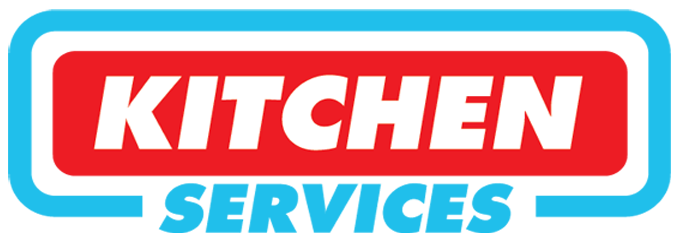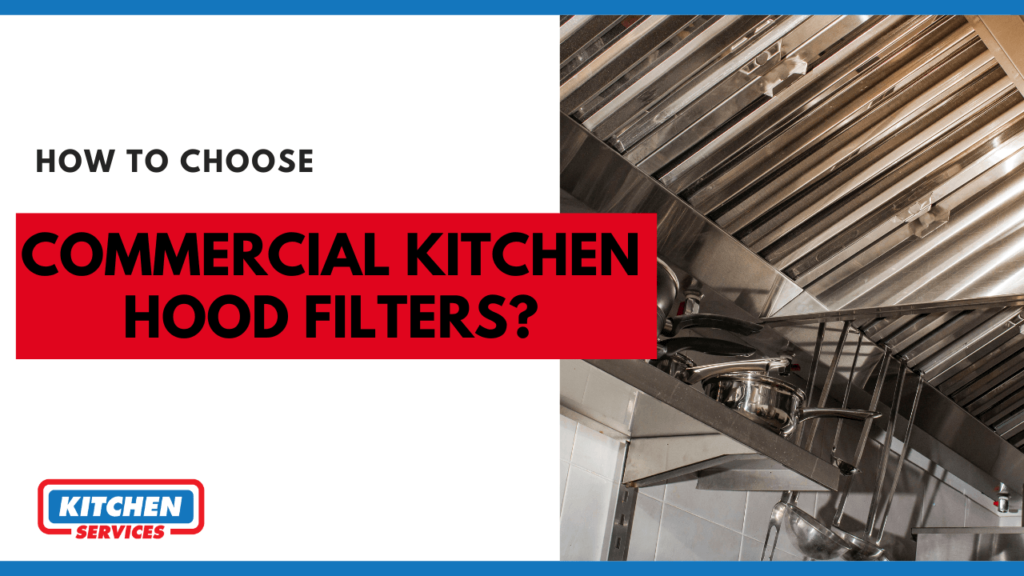Before choosing the perfect commercial kitchen hood filters for your commercial kitchen you must know the usage and advantages of these hood filters. So, basically, hood filters are actually installed over your commercial kitchen’s stoves and are designed in such a way that they tend to trap and remove any kind of smoke, grease, and other debris to block them from getting into your ventilation system.
In case these kitchen hood filters are not installed in your commercial kitchen hood all sorts of grease, particulate matter in smoke, and other types of debris would build up in all air ducts and could be the reason for the fire. Kitchen hood filters are very essential for your homes and commercial kitchens. In case you intend to meet the International Fire Code and National Fire Protection Association regulations, all of the domestic and commercial kitchens must have hood filters installed in them. These organizations state that the importance of having hood filters is to improve the kitchen’s air quality, it also protects the ventilation system and helps in preventing kitchen fires.
Benefits of Commercial Kitchen Hood Filters
Kitchen hood filters provide a lot of benefits. They help prevent kitchen grease fires, trap grease, and smoke and prevent them from polluting the entire ecosystem. These hood filters also help keep the air ducts, kitchen exhausts, and the entire HVAC system cleaner and running more effectively. A lot of people do not really realize grease, smoke and kitchen exhaust effluent all travel on vapors. If they are not captured by the hood filters for commercial kitchens and your home kitchens, they may cause some serious problems. Homes, hospitals, warehouses, and industrial kitchens should make sure to have hood filters for safety and to improve indoor air quality.
Different Materials Used in Commercial Kitchen Hood Filters
You must know that the standard hood filters are offered in three different materials. These materials are
- Aluminum
- Galvanized steel
- Stainless steel
There are many factors that you need to consider at the time you are deciding what material is the best which will suit your commercial or residential kitchen’s requirements. Two out of these factors would be how the hood filter will look with the interior of your kitchen and how high is the volume of activity regularly taking place in the kitchen. Basically, aluminum hood filters are comparatively shiny and appealing, but the backdrop is that they can be easily damaged and need to be replaced quite often. Whereas galvanized steel hood filters are sturdy but boring and these are not visually pleasing in look. At the same time, stainless steel hood filters are strong and attractive as well but they cost more than the other two types. So, out of these three types, it is up to the user and its requirement what type they would select for their home or commercial kitchen.
How to Attach the Hood Filters properly?
You can attach your hood filters to the hood above the stove in two different ways. You can either screw them or weld them with the help of stumps. If the hood is being welded in place, it will need a frame that can hold it together with the help of bolts and individual baffles. All the hood filters that are installed in this way tend to be comparatively more flexible, but they also tend to lose with the passing time. Whereas the hood filters are welded into their place using baffles that are constructed from a piece of metal. In this way, they can make the hood filter stiffer as well as durable. Even though the heavy-duty materials that are used to weld the hood filter in place would cost more, welding it in place holds it steady for a much longer period of time.
How to Measure Hood Filters?
To ensure that you get the correct hood filters for your kitchen ventilation system, follow these steps to measure and order them accurately:
- Measure the Filter Dimensions:
- Vertical Dimension: Measure from the top to the bottom of the filter.
- Horizontal Dimension: Measure from the left to the right of the filter.
- Round Up the Measurements:
- After measuring, round up to the nearest 1/2 inch. This ensures that you order a filter that will fit properly and cover the entire area.
- Order the Correct Size:
- Use the rounded measurements to select the filter size. For example, if your measured size is 9 1/2″ x 15 1/2″, you should order a 10″ x 16″ hood filter.
Measurement Examples
- Example 1: If the actual filter size is 8 1/4″ x 12 1/4″, you would round up and order a 8 1/2″ x 12 1/2″ filter.
- Example 2: If the actual filter size is 11 3/4″ x 17 3/4″, you would round up and order a 12″ x 18″ filter.
Conversion Chart
Here is a simple conversion chart to help with standard trade sizes and their actual dimensions:
| Trade Size | Actual Dimensions |
|---|---|
| 8″ x 8″ | 7 1/2″ x 7 1/2″ |
| 10″ x 10″ | 9 1/2″ x 9 1/2″ |
| 12″ x 12″ | 11 1/2″ x 11 1/2″ |
| 14″ x 14″ | 13 1/2″ x 13 1/2″ |
| 16″ x 16″ | 15 1/2″ x 15 1/2″ |
| 18″ x 18″ | 17 1/2″ x 17 1/2″ |
| 20″ x 20″ | 19 1/2″ x 19 1/2″ |
By following these guidelines, you can ensure that you order the right size of hood filters and maintain an efficient and compliant kitchen ventilation system.
What are the best commercial kitchen hood filters?
Choosing the best commercial kitchen hood filters depends on your specific needs and the type of cooking you do. Here are some popular and highly recommended types of filters for commercial kitchens:
- Baffle Filters: Made of stainless steel, these filters use a series of baffles to direct and capture grease and other airborne particles. They are durable, easy to clean, and effective for most types of cooking.
- Mesh Filters: Often made of aluminum or stainless steel, these filters have a mesh construction that captures grease and particulates. They are generally easier to clean but may need more frequent replacement than baffle filters.
- Carbon Filters: These filters are excellent for removing odors and smoke. They work in conjunction with other filters and are often used in kitchens where strong odors are a concern. They need to be replaced periodically.
- Grease Cup Filters: These are used in conjunction with other filter types to collect the grease that is captured by the filter. They are designed for easy removal and cleaning.
- High-Efficiency Particulate Air (HEPA) Filters: HEPA filters are highly effective at capturing very fine particles and are ideal for kitchens where air quality is a major concern. They are typically used in conjunction with other filters.
- Metal Mesh Filters: Made from multiple layers of fine metal mesh, these filters are durable and provide excellent grease removal. They are usually easy to clean and maintain.
How To Clean Commercial Kitchen Hood Filters?
It is really very important for you to make sure that the commercial kitchen hood filter is frequently cleaned and maintained properly. All of your commercial kitchen’s hood filters see a lot of activity that is going on in your commercial kitchen. Dirty hood filters will make your kitchen unsafe in many terms. It can be a serious fire hazard, they can cause the kitchen to have exceptionally smoky air and excessive heat and strain on the exhaust system that leads to severely poor air quality. You should always keep your commercial kitchen hood filters clean in order to keep the hood filter clean and properly maintained and to make it work more efficiently, reduce utility costs, and extend its life.
Here’s the proper way to clean a hood filter effectively:
- You can wash your hood filters by using soft sponges and warm water with soap in order to remove the grease and dirt.
- You should never use tough chemicals in the hood filter cleaning process, as they can cause decay of the metal used in the making of hood filters.
- Another option for faster, easier cleaning of the hood filter is to put the parts into the dishwasher and get it cleaned in a proper way and quickly.
- Soak Tank can also be one of the options. Investing in a soak tank is another option that cuts out the time and labour involved with manual cleaning. Simply fill up the tank with water, then add non-corrosive and metal-safe cleaner, and let the filters soak overnight. The next day, take the filters out, rinse, and they are ready to use
To ensure the hood filter is working properly, maintenance service should be performed on it at regularly scheduled intervals several times each year by a trained professional.
Commercial Kitchen Hood Filters FAQs
What is the best filter for a range hood?
Stainless steel baffle filters are the most efficient and cost-effective choice for your range hood filters.
How often do you need to change the filter in a kitchen hood?
For optimum performance of your rangehood, mesh filters should be cleaned every few weeks/months and replaced every 1-2 years (depending on usage). Carbon filters, on the other hand, need to be replaced every 3-4 months (or every 120 cooking hours).

